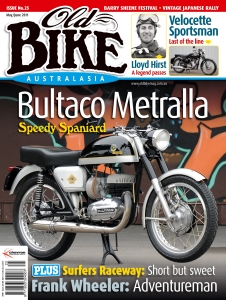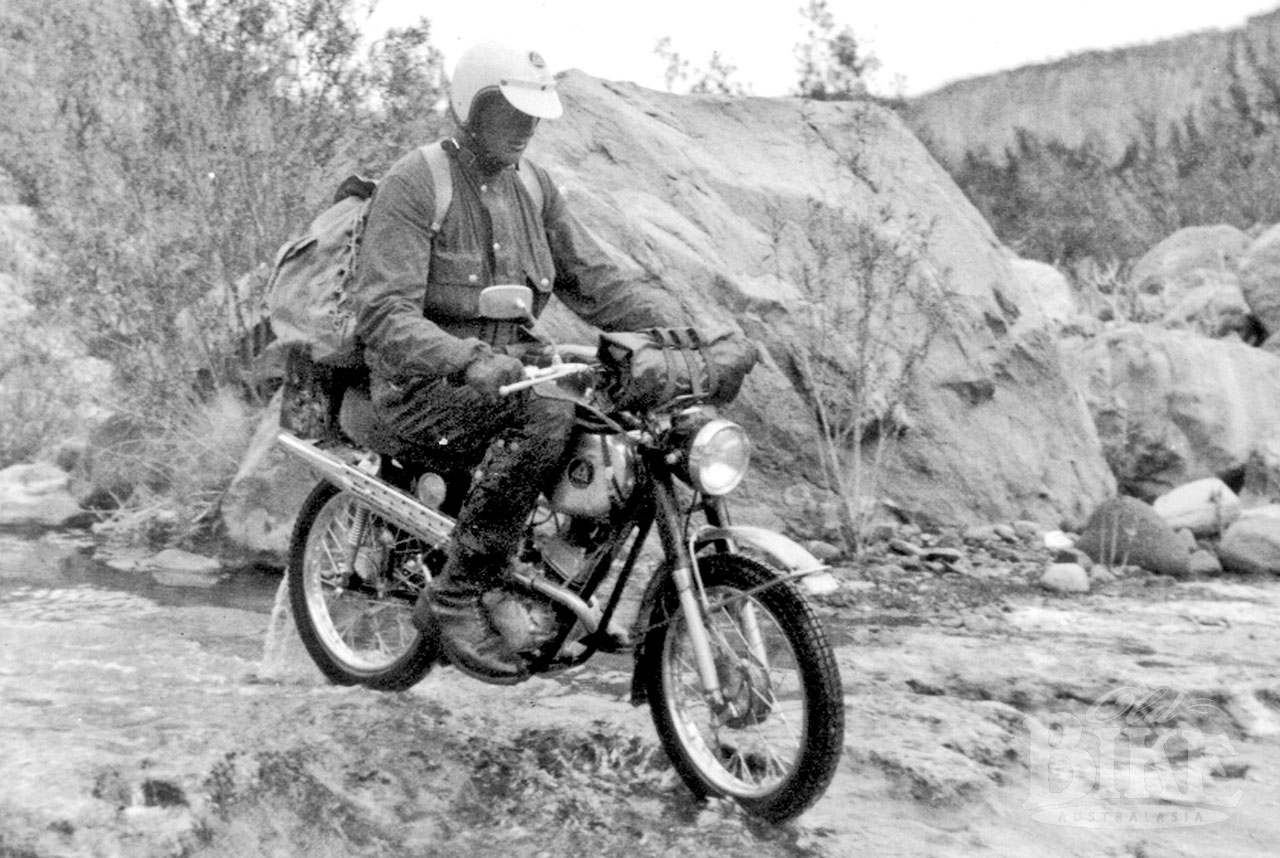
Dutch ownership, American design and Japanese built; the final incarnation of the Hodaka was named after an Australian marsupial that eats, roots and leaves. Naturally it burrowed down under to complete a lap of our continent.
Story: Peter Whitaker • Photos: Frank Wheeler collection
Spawned as a result of the Japanese company Yagamuchi’s bankruptcy, the Hodaka Industrial Company of Nagoya – originally a powerplant and transmission supplier – became a fully fledged Japanese motorcycle manufacturer in 1973, yet its spiritual roots remained in America’s southwest. British machines such as Cotton, Greeves and DOT had developed to fill needs of the burgeoning US ‘off-road’ market but the street-legal, PABATCO* designed single cylinder two-stroke Hodaka turned the market on its head. At $379 The Ace 90 sold over 10,000 units in the two years after its introduction in 1964.

The Hodaka Ace 90 became the Ace 100 then – despite a series of somewhat supercilious names such as the Road Toad, the Super Rat and the Thunderdog – the diminutive Hodaka became an enormous force in motocross, trials, enduro, flat track and even road racing. At home on any racetrack the Hodaka was in its element in the desert and it was on an Ace 90 that “Big Frank” Wheeler was 100cc Californian Desert Racing Champion from 1965 – 1967; during which time he won many other events such as the fabled Greenhorn Enduro – a 500 mile cross country event through the Mojave desert. Nothing too remarkable in that except for the fact that “Big Frank” stood over 6’6” in his riding clobber and weighed in at better than 15 stone. Simply surviving such events was a mighty effort from his minute machine.
It was during this period that Wheeler became involved in developing the Hodaka from the 100 series through to the original Dirt Squirt model. In addition to engineering input to the competition models it seems Wheeler’s principal task was to ascertain the level of destructability of the humble road oriented Hodakas.
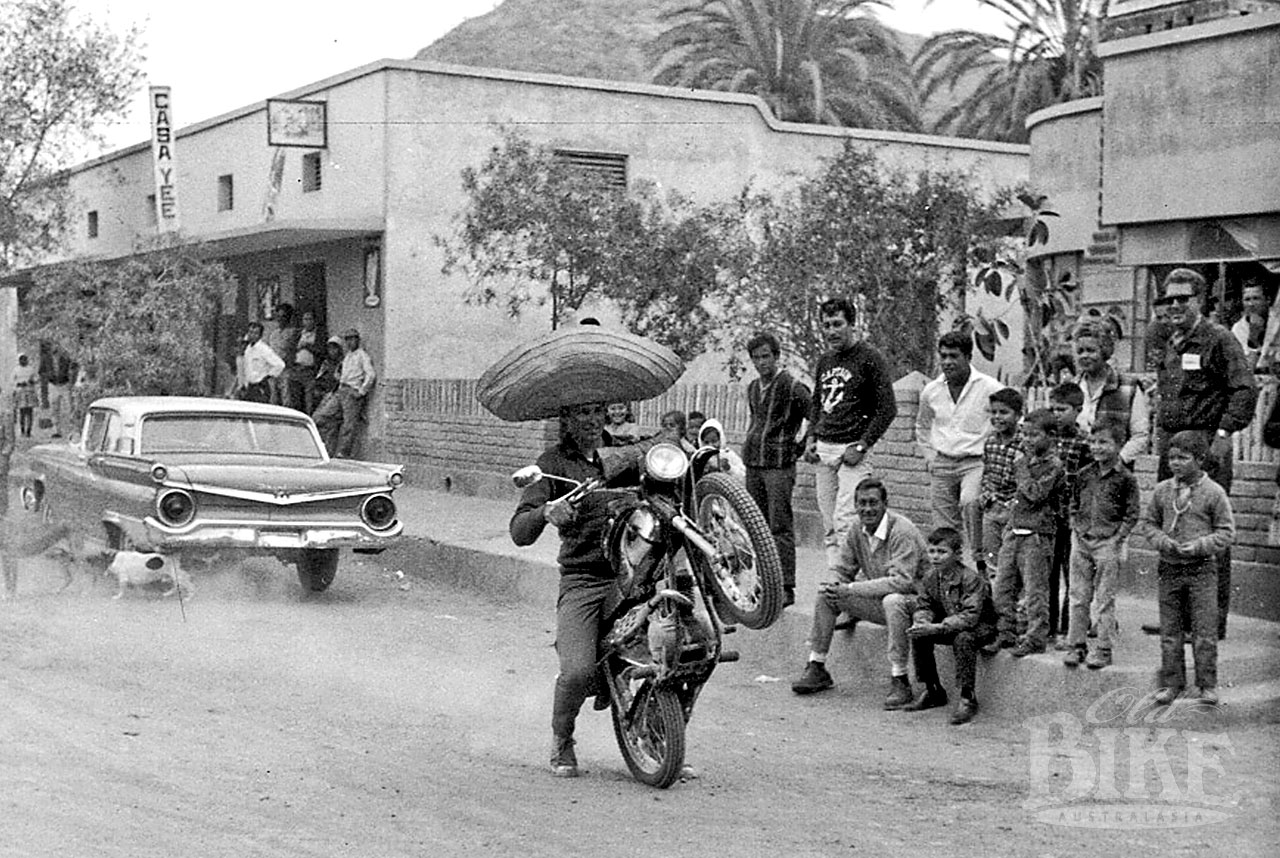
In 1966 Wheeler and Hodaka Marketing Manager Marvin Foster rode a pair of Ace 90s on a 3,800 mile tour of the Baja Peninsula; a journey that proved to be the forerunner of the BAJA 1000. Foster then settled down to corporate life in Oregon but it appears Wheeler simply couldn’t help himself and as soon as the Hodaka Ace 100 was introduced he was off on a ride down to Panama before turning north and riding all the way to Anchorage Alaska – then, of course, back to California. Wheeler then decided the aptly named Road Toad would be improved by a sidecar, built one, and completed several laps of Death Valley; simply to prove some point or other. So it was only natural that when the entirely new 125 cc powered Hodaka Wombat was released in 1972 Wheeler decided to head across the Pacific to Hodaka’s second biggest market and show the Aussies a thing or two.
Wheeler wasn’t the first rider to circumnavigate Australia. Nor was he the first to do so on a small bore – a masochist from Sydney named Martin was recorded as completing that task on CZ125 in 1958. However Wheeler was representing the Stars & Stripes and, as most of his supporters and fellow Hodaka fanatics in Southwest USA would have placed Australia somewhere between France and Italy, few would argue when Wheeler claimed to be the first to circle the entire country. Certainly he was the first to document a two-wheeled lap of Oz following National Highway One for its entire length; and for those who can remember much of this ‘highway’ was still dirt back in 1972; in fact almost 40 years later the northern section through Hells Gate and Wollogorang to Borroloola still resembles a whooped out motocross track at those times of year it’s actually passable.
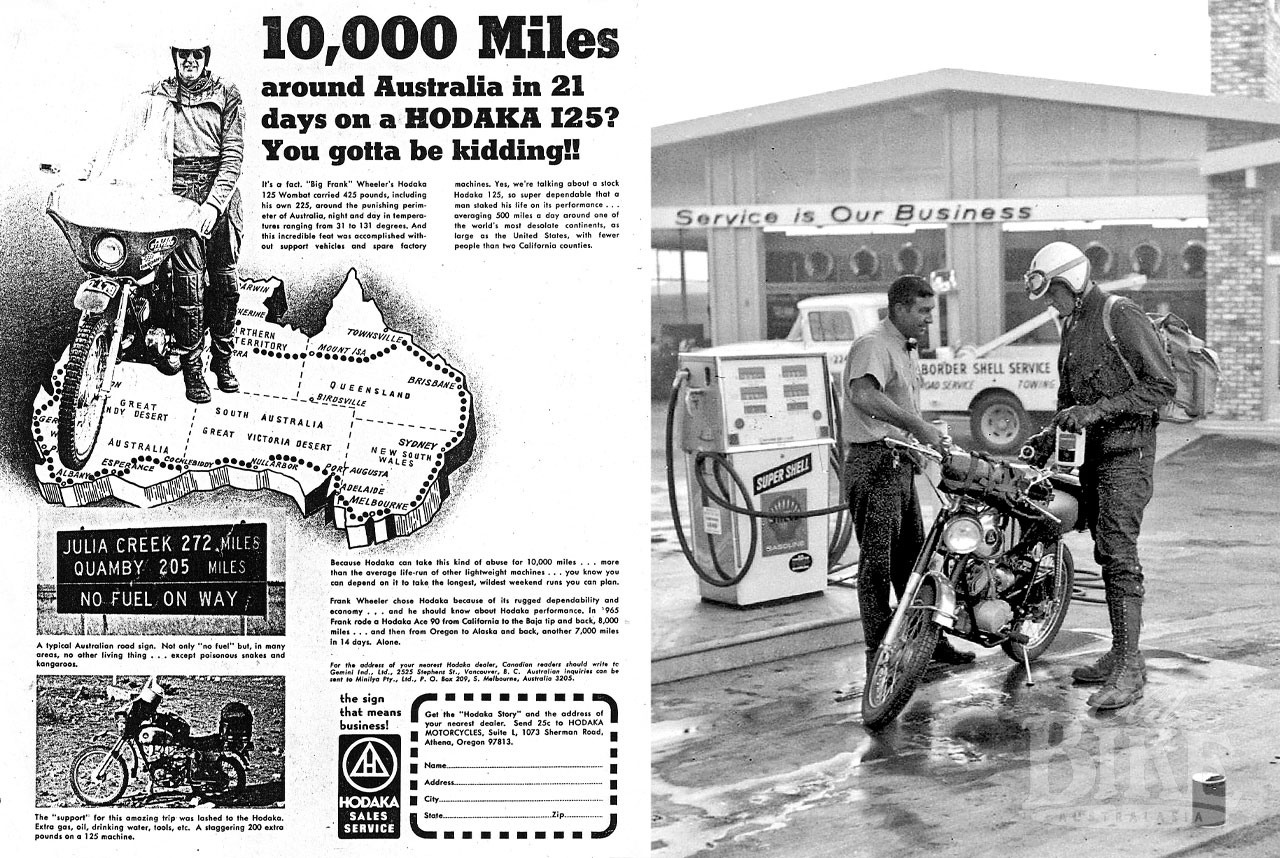
But Frank’s fellow Americans had never heard of such places, and to explain the vast distances involved Wheeler likened his journey down under to riding from Los Angeles to New York and back to Phoenix on a dirt road then continuing to San Francisco and across to New York again on a two lane road before returning to Los Angeles; distances Americans could relate to, if not experience. And before leaving home Wheeler’s knowledge of Gondwanaland or his understanding of the immensity of the task ahead wasn’t much better than his fellow countrymen. “I was looking at a map of Australia about the size of your hand” he said “and saw this thin red line all round the coast and thought ‘terrific’, I’ll go down there, ride around in a counter clockwise direction, sit in the right hand lane and enjoy the coastal views.”
As it happened, once the machine had been prepared to Wheeler’s liking, he had to be guided from Milledge Bros. showrooms to Melbourne’s fringes and set on the road north little comprehending that December 1st wasn’t the ideal time to be heading towards the tropics (after all, it never rains in Southern California). But with Wheeler it was crash or crash through; this man had no alternate modus operandi.
The plan, come what may, was to be on the road by eight, ride until noon, rest up to avoid the midday heat, then continue until dark. His only problem on the long run up the coast to Cairns was the experimental ‘floatless’ carburettor he was ‘testing’. To this day Wheeler maintains “the damned thing worked but because of the constant variation in height between the carby and the level of fuel in the tank the engine would run too rich or too lean and by the time I got to Gosford I threw the sonofabitch away before I damaged the engine any further”.
Having solved his fuel delivery problems before he ventured too far north he was otherwise fully prepared and carrying a full complement of spares. These included a completely disassembled Wombat engine stored behind the custom fairing he’d installed, a spare carby (as noted) spark plugs, cables, tubes and tools. Supplies included a couple of gallons of water and emergency rations including steel cans of fruit. A 5 gallon outboard fuel tank was bolted to the rear rack.
The Wombat is by nature a burrower and carrying close to 200 kg Wheeler’s Wombat was no different. “The Wombat had a big tank to start with” he explains “and on a dirt road with a full load I could actually swing the bars from lock to lock and the bike wouldn’t deviate. I broke countless spokes and suffered nine rear flat tyres.” What bitumen then existing in the north west regions of Australia consisted of rudimentary beef development roads baked at a mean 40∞ Celsius for much of the year whilst being pummeled by elephantine road trains before being marinated by ‘the wet’. Hardly a surface conducive to retaining air in the overloaded Hodaka’s rear tyre.
West of the Stuart Highway the bridge over the immense Victoria River had been completed in 1970 allowing travellers a shorter route west than that through Top Springs and Wave Hill to the south, however the Victoria Highway (National Route #1) was rather more notional than national. Wheeler plugged on the Hodaka never missing a beat and averaging somewhere between 25 and 60 mpg – there were a lot of variables – down through Halls Creek and across to Fitzroy Crossing where he ‘lost’ a few days. Seems the renowned outpost was populated only by the publican, the postmaster, three nurses, six nuns and a zillion flies.
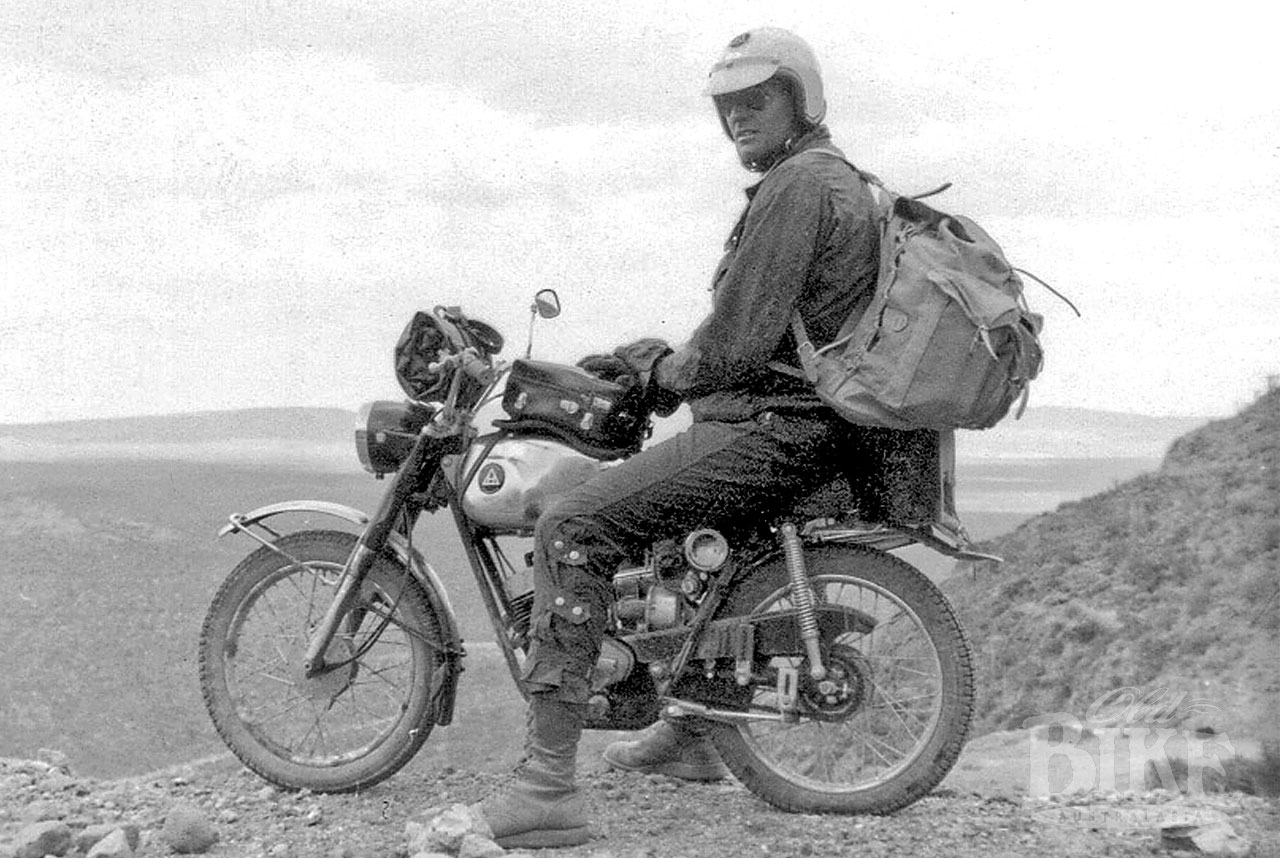
Despite the sand drifts corrugations and washouts over almost 8,000 km of searing hot burning tracks, breakages were few; the rear rack wasn’t really built to carry 40 kg and the exhaust mounts cried enough, and both had to be repaired in Perth where Wheeler took on a new rear tyre and had the rear wheel respoked while he enjoyed a few days respite before heading off on the longest, and arguably the hottest leg of his odyssey – across the Nullarbor – after a quick dip in the ocean at Esperance.
Arriving back in Melbourne thirty days after his departure on December 1st 1972 Wheeler was warmly welcomed at Milledge Bros Minilya showroom where the weary Wombat was immediately placed on show front and centre. Wheeler had proved the Hodaka’s endurance. His circumnavigation wasn’t a first but it was a novel approach and as a test of reliability it was second to none. In 21 days ‘on the move’ the much abused Hodaka racked up an average of 430 miles a day – the worst being 280 and the best 575 – and, all obstacles considered, the trip was relatively trouble free. Later Hodaka advertising in the USA claimed a journey of 10,000 miles (a nice round hyperbolic figure) around the world’s most desolate continent; as “large a the United States with fewer people than two Californian counties”
Despite the hazards of Kangaroos, wallabies, emus errant livestock and even the occasional vombatus ursinus Wheeler maintained the most fearsome danger he faced was Aussie drivers ‘They’re the biggest single hazard I’ve ever encountered, I guess it must be those crazy vehicle laws”. Perhaps no one ever got round to informing Wheeler that whilst the right hand side of the road may be more scenic it’s far safer to ride to the left when touring downunder.
Despite Frank’s criticism of our road manners he was much taken with our wide open spaces, laid back way of life and possibly our women. After a hectic decade flying light aircraft in war torn Central America he emigrated to Australia and, inspire by our home grown crazies Dick Smith and Hans Tholstrup, Frank undertook a number of adventures in home-built solar-powered boats around Arnhem Land, a solo walk across the Simpson pushing a Honda ‘Power Carrier’ and a transcontinental ride on an ag-bike ‘outfit’. Bitten by the postie bug Frank rode one of the little blighters along the Tropic of Carpicorn and is currently trying to convince the environmentalists to allow him access to the Bi-Centennial Trail. Good luck Frank.
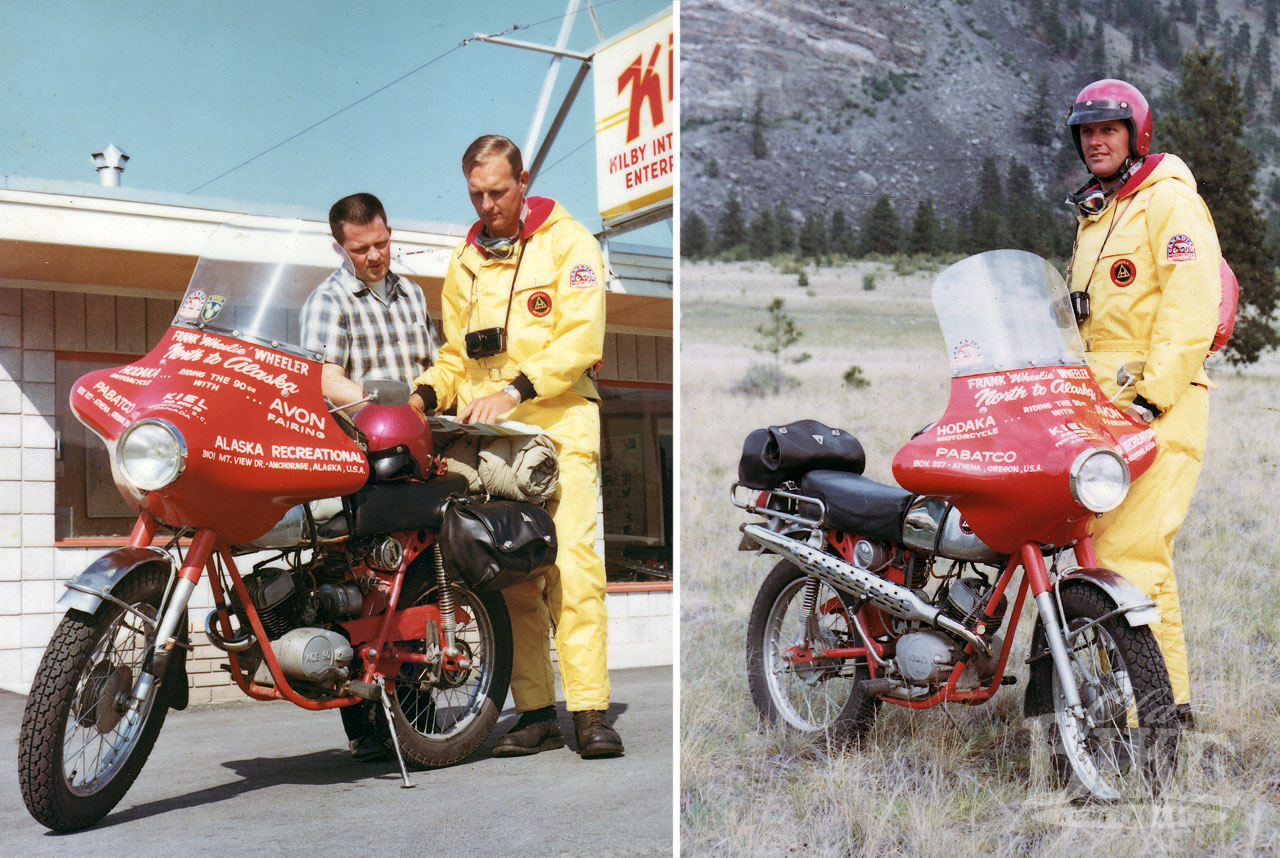
Hodaka heaven
It was the time of ‘The Blackboard Jungle’, ‘The Wild One’ and rebelling without a cause – the baby boomers had developed into teenagers and those that weren’t bleaching their hair were looking for something to do. In America’s food bowl farm bikes suddenly became fun and headed for the deserts of California, Nevada, Arizona and New Mexico thanks largely to Hodaka.
Until the major Japanese marketers realized how big the bucks were Hodaka claimed the high ground in the US market selling over 17,000 of their ACE 90 model in four years. By the time the big four turned their attention to the off-road market, advertising the worlds’ fastest clam no longer cut it against the likes of Yamaha’s DT-1 and Honda’s Elsinore
Hodaka’s became an instant cult phenomenum. Though some riders maintain that anyone who suffered a Hodaka any further than the corner store deserved the utmost admiration. Others respond to mere mention of the marque like an Italian teenager throbs to the sound of desmodromic valves – which is what makes the annual Hodaka Days event held in Athena Oregon such a big deal. Up to 600 Hodaka Hams gather for the weekend to celebrate the long dead marque – though, with those numbers, clan might be a more appropriate word than cult.
Here in Oz the odd Combat Wombat or Super Rat might be sighted at the occasional VMX meet but, despite “Big Frank” Wheeler’s efforts, Hodaka never hit the big time down under; though, strangely enough I know three people in Tweed Heads all of whom swear allegiance to the marque.
* PABATCO is an acronym for Pacific Basin Trading Company, which was owned by the Shell Oil Company for most of its existence.
